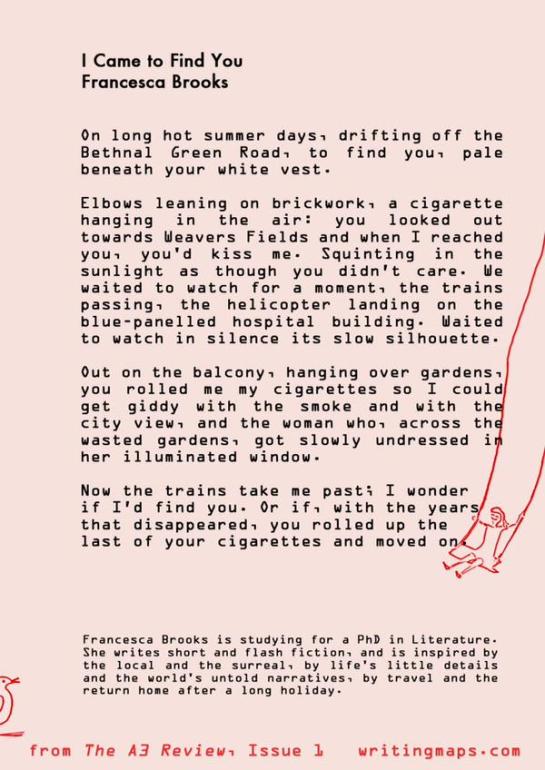Monthly Archives: April 2015
The Still Point at Fat Relic: Creative Exchange between artists and researchers
The Still Point presents an evening of creative exchange between artists and researchers at Fat Relic. Join us on Monday the 27th April for an exhibition of visual work and live readings over drinks.
Over the course of a month artists from the Slade School of Art and Central Saint Martins, and PhD Researchers from UCL, King’s College London and the Bartlett, have been working collaboratively in a series of partnerships. The aim of the creative exchange has been to encourage PhD students to engage with their research in creative and experimental ways, whilst also giving the artists a chance to develop their practice reciprocally by investigating new ideas and alternative ways of seeing.
The event on the 27th April will showcase the results of these collaborations. The event hopes to tease out the similarities between the kinds of rich thinking and exploration we do as researchers and as visual artists, and to interrogate the very notions of ‘art writing’ and of ‘academic style,’ by blurring the boundaries and bending the rules.
Work and readings from Mircea Teleaga and James Fisher, Maud Craigie and Polly Mitchell, Maxima Smith and Penny Newell, Sarah Boulton and James Morland, Dala Nasser and Laura Silva.
For more details see our Facebook event page: https://www.facebook.com/events/921737127878443/permalink/921749897877166/
Or view the listing on Art Rabbit: https://www.artrabbit.com/events/the-still-point-journal-creative-exchange
Jessie Dismorr and Streetwalking
This month Flashpoint Mag launched an issue devoted to Blast magazine in its centenary year. Having heard about the work I did on Jessie Dismorr during my undergraduate degree they asked if I would submit something so that they could give the women of Blast the coverage they deserve. You can read my piece on ‘Walking and Rewriting London’ here. My essay considers the relation of Dismorr to the feminist and metropolitan cultures of her day and I argue that her writings for Blast represent a personal rewriting of the patriarchal city – an architectural prose which re-conceptualizes the London of 1915.
I discovered Jessie Dismorr’s work in Blast during my degree and enjoyed hunting down new sources for her work and exploring the significance and feminism of her short experiments in the world of prose. You can read some of my reflections on different aspects of her work and career on my old blog, where I was tracking my research: Jessie Dismorr- Vorticist Streets, Jessie Dismorr and Rhythm, The Omnibus.
But my return to Jessie Dismorr’s prose has been an ‘interlude of high-love making’ and I must get back to the ‘life of thoroughfares to which I belong (i.e the subject of my PhD!).
I wander in the precincts of stately urban houses. Moonlight carves them in purity. The presence of these great and rectangular personalities is a medicine. They are the children of colossal restraint, they are the last word of prose. (Poetics, your day is over!) In admiring them I have put myself on the side of all severities. I seek the profoundest teachings of the inanimate. I feel the emotion of related shapes. Oh, discipline of ordered pilasters and porticoes! My volatility rests upon you as a swimmer hangs upon a rock. (Dismorr, ‘June Night’)
Richard Warren, whose blog provides a wonderful and extensive archive of Dismorr’s work, references my work before exploring Flanerie and Loss on the No.43 bus: Jessie Dismorr and Rosemary Tonks:
‘The new Flashpoint online magazine has a useful piece by Francesca Brooks on Jessie Dismorr, Vorticist painter, poet and flâneuse, whose artworks and writings can be found extensively on my pages up above. Brooks focuses pretty much entirely on Dismorr’s two urbanist prose poems published in 1915 in Blast 2. Her tie-in of Dismorr with Guy Debord and the dérive is apt and necessary; we can easily overlook the romantic roots of situationist thought, and the dérive is derived from Baudelairean flânerie.’



